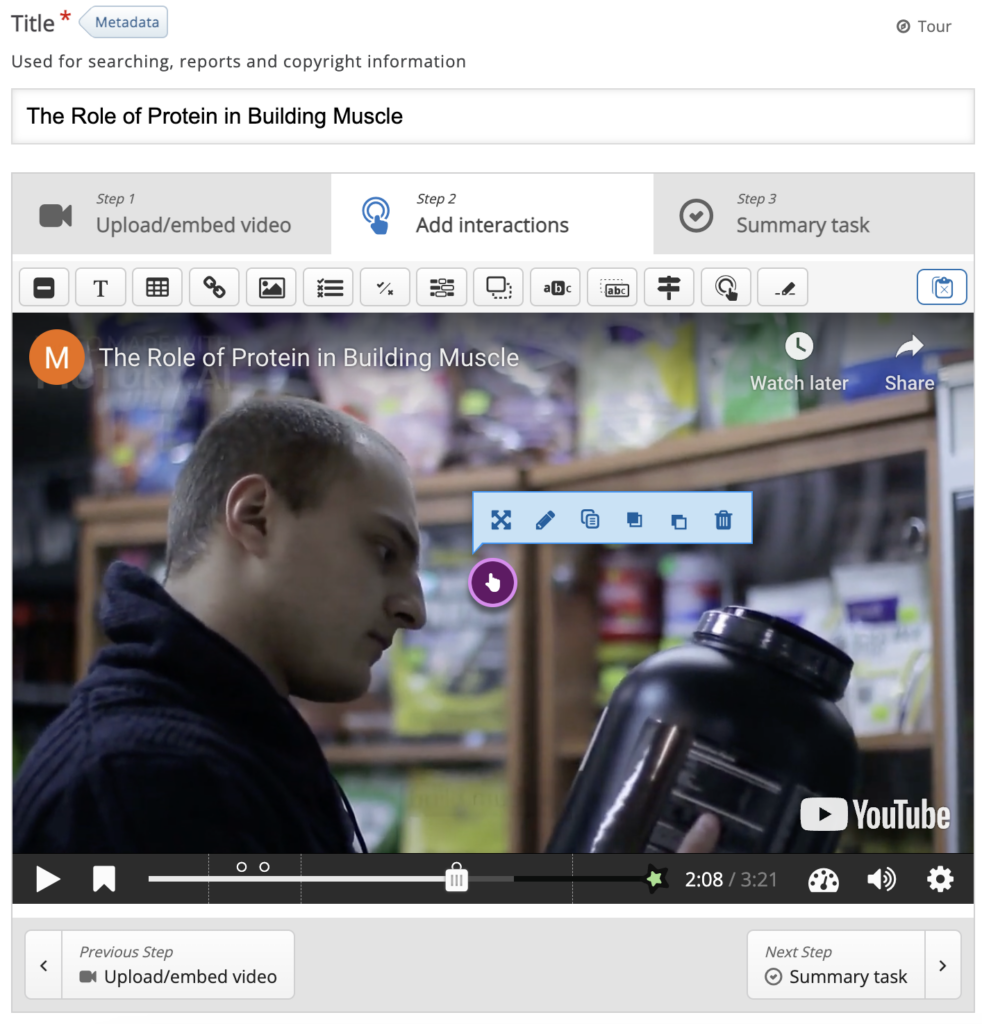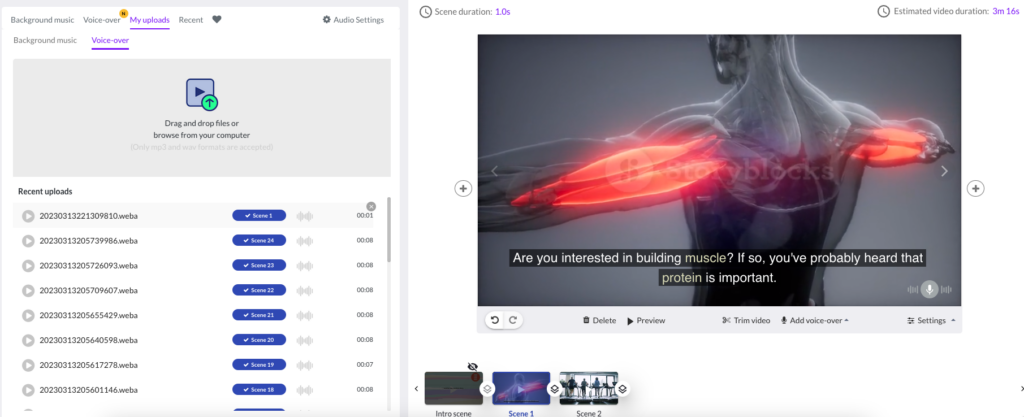Using pictory.ai, and ChatGPT, I was able to create an educational video about the role of protein and its importance in building muscle. Within the video, I covered the basics of what protein is and how it’s related to building muscles, the different types of proteins available, and the amount of general consumption intake. Below is the improved version.
ORIGINAL VIDEO
IMPROVED VIDEO
IMPROVEMENTS / RELATED THEORIES AND PRINCIPLES
- Interactivity: I added multiple choice questions with H5P to help students develop their critical thinking skills as well as understanding and memory of the presented concepts (i.e., incorporating active learning)
- The Signaling Principle is applied as the video deliberately pauses when multiple choice questions are present so that learners know exactly what to pay attention to on the screen. In addition, the chosen videos are related to my narration.
- The Segmenting Principle is also evident, as I added bookmarked timestamps to identify different concepts throughout the video. The playback rate of the video can also be changed. This way, learners have more control over their learning.
- Optional Closed Captions: This helps to not overwhelm learners with the dual-coding theory through visual and audio channels. Video, text, and narration can be too much information depending on the individual, so I decided to give my learners the option to optimize their experience of learning and learning accessibility.
- Note*: This improvement is not evident in the improved video as H5P could not support captions for Youtube videos (ideally it would have been included)
- The Redundancy Principle suggests that humans learn best with narration and graphics, as opposed to narration, graphics and text. By not having text on the screen perpetually, learners can benefit from a better learning experience.
- The Modality Principle mentions that people learn better from graphics and narration compared to animation and on-screen text. Since the video already includes a voiceover, I used this principle to limit the amount of text on screen through optional closed captions.

CONCLUSION
Overall, I was satisfied with my script, narration, and choice of content for my video. I decided not to change these elements as they played part in the Personalization Principle, where I was able to use a more conversational tone throughout my narration to improve the learning experience. Ultimately, the use of captions was always a mandatory idea for me so that learners have descriptive audio to fall back to should they have audio issues.




Recent Comments